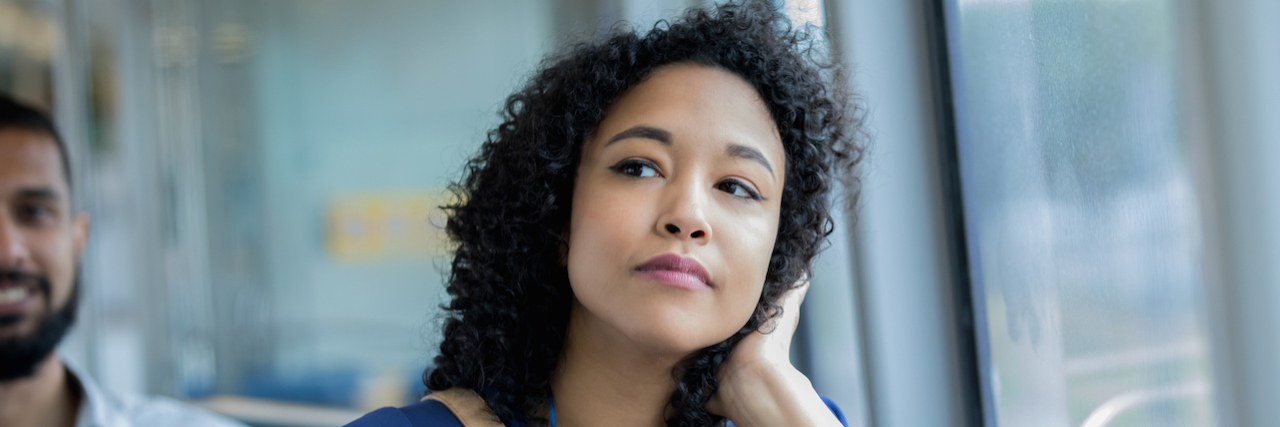Exploring Electroconvulsive Therapy as a Treatment Option
Editor's Note
Any medical information included is based on a personal experience. For questions or concerns regarding health, please consult a doctor or medical professional.
When you hear the term electroconvulsive therapy (ECT), what do you think of? Do you recall the traumatic scene from “One Flew Over the Cuckoo’s Nest” in which Jack Nicholson is shocked without anesthesia? Do you imagine mental asylums and the eclectic mix of patients they treat, as seen in “Girl, Interrupted”? If so, you’ve been made victim of the media dramatization and factual incorrectness of films about psychiatry; specifically ECT. The media portrayal of electroconvulsive therapy — and its associated treatments — is often violent and barbaric, leaving viewers appalled by the supposedly therapeutic practice.
With these representations consistently depicting ECT as a gruesome and obsolete treatment option for individuals with mental illnesses, it would be surprising to hear that the practice is still used today. It may be even more surprising, however, to hear that many (including myself) are advocates for electroconvulsive therapy as a treatment for major and unremitting mental illnesses. The stigma around electroconvulsive therapy must be eliminated, as it is a viable treatment option for many individuals.
As an individual who has been managing multiple mental illnesses for the past six years, I have thrown myself into the deep end of researching treatments, no matter how far-fetched they may appear to the untrained eye. My introduction to electroconvulsive therapy came in the form of a book — “Madness: A Bipolar Life,” written by Marya Hornbacher, my childhood hero. Her brief mention of the word electroshock intrigued me, and led me down a rabbit hole that would span the rest of my life to date. This markedly significant occurred at age 11; just young enough so my mind hadn’t been clouded by inaccurate representations of the treatment.
My experience with the subject is not like that of most individuals. As expected, the public view of ECT is in alignment with its negative portrayals in media. The problem with this is that the negative media portrayal is completely incorrect and inconsistent with current guidelines for the practice.
Unlike how the practice was depicted in “One Flew Over the Cuckoo’s Nest,” electroconvulsive therapy is always performed under general anesthesia and with the aid of a muscle relaxant. The general practice is as follows: a patient is given a muscle relaxant and a general anesthetic. Electrodes are placed to monitor brain activity and deliver a small electric current to the brain (for one to two seconds), which induces a seizure. The seizure usually lasts for about 40 seconds, and because of the muscle relaxant, does not cause any movement other than slight hand or foot twitches. Patients are able to go home the same day as receiving the treatment, which is usually administered a few times a week for a total of six-12 sessions.
That doesn’t sound so bad, does it?
Of course, as with any other medical treatment, there are risks to receiving electroconvulsive therapy. The most often cited of these are the potential side effects of memory loss and general cognitive adverse effects, which, understandably, raises a question mark in the minds of many. To those who decide to receive the treatment, however, the symptoms of severe mental illness can be more debilitating than amnesia. That’s why ECT is usually used as a last resort and, even then, is decided upon carefully.
Why, though, is electroconvulsive therapy even considered, what with the risk of such an influential side effect? The answer is simple: because it works. In patients with catatonia (a severe psychomotor syndrome), approximately approximately 80-100 percent will experience improvement of symptoms (Luchini, Mariani, Medda, Mauri, Toni & Perugi, 2015).
Rates of response in bipolar disorder average 70 percent for patients in the manic phase of illness; for patients in a depressed or mixed state, response rates are similar to those of unipolar depression (Mankad, 2019).
For those with major depressive disorder, remission of symptoms is achieved 70 to 90 percent of the time (Kellner, n.d.). This rate is more than double that of first line antidepressants.
This is a critical point in the advocacy for electroconvulsive therapy — its efficacy. If the treatment were not as effective as it is, it could be argued that the practice is not worth the risks. However, because there are few other side effects and the benefit is so high, ECT has been deemed by the FDA to be an effective treatment of moderate risk. So if the consensus among psychiatrists and other clinicians is that electroconvulsive therapy is generally safe and effective, why is it that yearly, only about 100,000 Americans receive ECT — while in 2018, 11.4 million American adults experienced a severe mental illness (Davis, 2017)?
This is because of the stigma. Until that stigma is eliminated through education and awareness, the benefits of electroconvulsive therapy will not be realized by potential patients, who may be misinformed about the practice.
So the next time you’re watching a movie with a friend and they cringe at a horrific dramatized depiction of ECT, help do some good by pointing out the inaccuracies. If they pass the message along, it could help make a big difference in the way we approach the treatment of mental illness.
Getty image by Courtney Hale

